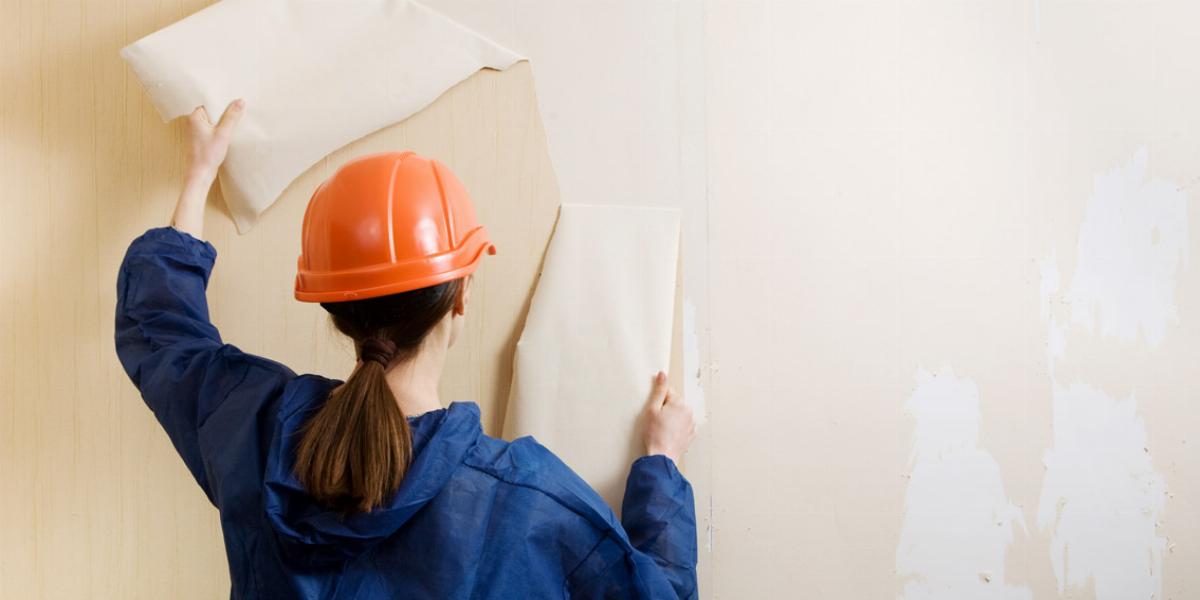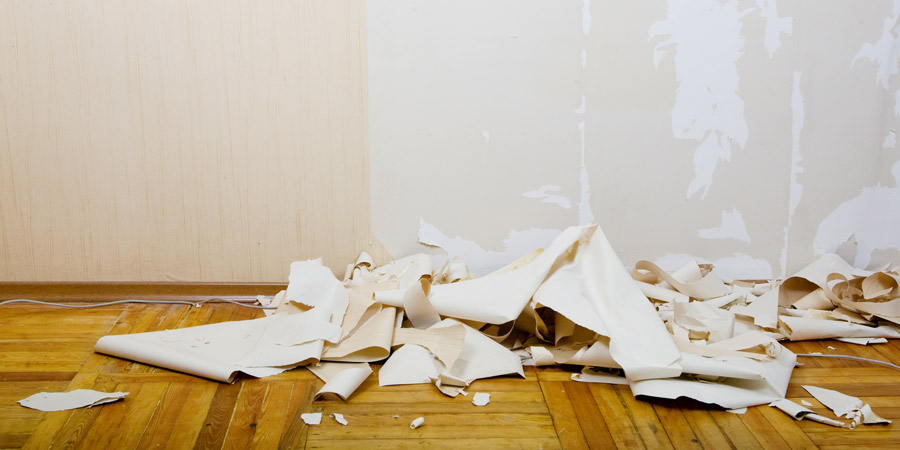
From stubborn adhesive to piles of soggy paper, taking wallpaper off your walls can be a messy endeavor. But while it’s possible to paint over wallpaper, it’s best to strip it and start fresh with a smooth, even surface. To streamline the process, we’ll walk you through the easiest ways to remove wallpaper and the best wallpaper removal tools to get the job done without damaging your walls.
Read on to find out how to remove stubborn wallpaper with expert tips from Rust-Oleum and HomeRight.
We’ll be honest – wallpaper removal can be very time-consuming and labor-intensive. Depending on the age and style of your wallpaper, the difficulty varies. Typically, the toughest aspect is removing wallpaper glue and backing. While you may want to speed up the process, working too aggressively can damage your walls. So, remember: patience and preparation are key.
First, determine what type of wallpaper you’re dealing with:
Pro-Tip: To remove vinyl or laminated wallpaper, peel away the top layer first to reveal the backing. If you come across sections that are difficult to remove, score these pieces with a wallpaper scoring tool and use a wallpaper remover to soak into the vinyl and adhesive.
Next, find out what type of walls you have:
Pro-Tip: To find out which type you have, check under a wall plate or light switch to see an exposed section of the wall. Drywall will be thin and uniform, while plaster will be troweled right up to the electrical box.
Let’s get the room ready.
Before you start taking wallpaper off the walls, take the following steps to make stripping wallpaper safe and minimize the mess:
Pro-Tip: If you’re removing several rooms’ worth of wallpaper or if this task is part of a larger home improvement project, consider renting a renovation dumpster to handle the debris.
Now that you and the room are ready, let’s get to work!
Start at a corner, loose seam or an outlet and use a putty knife to peel the top layer of wallpaper. Leave the backing on the wall for now – we’ll work on that next.
If you can tear the paper off in complete or partial sheets, this is called dry stripping. When working with well-primed walls, you should be able to continue dry stripping and finish the room in a couple hours.
The longer the paper has been up, the more difficult this will be. If you have trouble removing the facing, we have you covered with the next steps.
Run a scoring tool all over the remaining wallpaper and backing. Whether you decide to go with solvents or steam, perforating the wallpaper with tiny holes allows the layers to be saturated.
Pro-Tip: Be careful not to score too hard and damage the wall surface.
“We recommend starting with our easy-to-use Paper Tiger Scoring Tool, which will perforate the wallpaper allowing our wallpaper stripper to penetrate and loosen adhesive without damaging the wall.”
Stefanie Spa | Assistant Brand Manager, Rust-Oleum

Both options are good choices for taking down the remaining wallpaper. Read on to learn the specifics of each.
Chemical wallpaper strippers break down the paste to remove wallpaper easily. To help you remove wallpaper safely, Stefanie Spa with Rust-Oleum provided the following tips:

Using a steamer to remove wallpaper is an eco-friendly alternative for stiff and heavy products. You can rent a commercial steamer at your local home improvement store.
“We have found that one of the easiest ways to remove wallpaper is with steam. Stripping wallpaper can be a painful chore, but using steam makes the job much easier,” said Makayla Durand, Marketing Assistant at HomeRight.
“When the wallpaper is removed, you should go back over the wall with the steam plate to remove all of the adhesive. Once the wallpaper has been completely removed, you can move on to painting your room.”
Makayla Durand | Marketing Assistant, HomeRight
To ensure fresh paint coats your wall evenly, you need to make sure the surface is clean and flat. Sponge the walls with clean water to remove remaining adhesive. Be careful not to oversaturate drywall. Allow the walls to dry for a few days before painting or recovering.
If you damaged plaster or drywall during wallpaper removal, it’s time to patch it up. To fix drywall, you’ll need a spackling and patching compound. Spa recommends MH Ready Patch because it “dries fast, cures rock hard, and is shrink resistant.” Use a spackling plate to place the compound onto the areas with holes, then smooth out until flat.
Now that you’re done taking down the old wallpaper, it’s time to paint! Whether you want to paint an accent wall or go with a vibrant color throughout the space, it’s important to select the right shade to set the mood. For more DIY inspiration, check out the For the Home section of our blog.
Have you stripped wallpaper in your home? Let us know your tips and tricks in the comments below!
